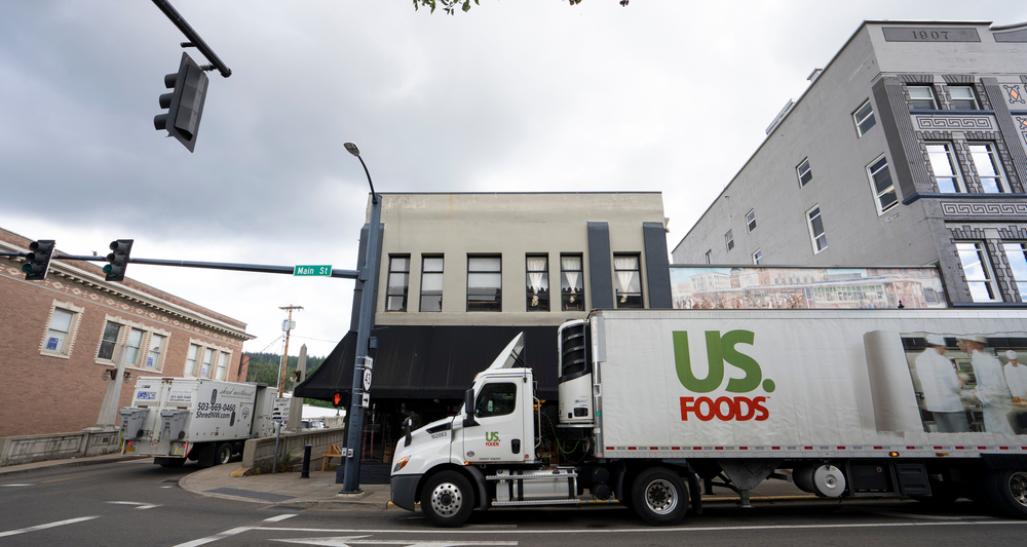
At the NRF Supply Chain 360 conference and expo, attendees explored the modes and methods needed to build a stronger, more sustainable supply chain and ensure resiliency in challenging times. Learn more about the conference, held June 20-21, 2022, in Cleveland, here.
Retailers are no stranger to the issues caused by congestion at the ports and consumer economic worries. Delays at the Port of Los Angeles hit nearly 20 days at the beginning of 2022, as highlighted in a report by the International Monetary Fund, while other major U.S. ports also saw significant delays. At the same time, inflation has been running at about a 40-year high, according to NRF chief economist Jack Kleinhenz.
Both are impacting foodservice companies, along with most other sectors of the economy. Supply and labor shortages are top challenges along with rising costs, says Steve Simonson, vice president with logistics consultancy Tompkins Solutions. Plus, increased transportation costs and driver shortages are leading to more empty shelves and food spoilage.
The challenges show no signs of letting up. However, operational changes and the intelligent application of technology can help many foodservice companies better navigate these obstacles.
Product shortages
In addition to delays and inflation, many restaurants have had to manage through product shortages, often a result of labor shortages and plants shutting down due to COVID-19 infections.
Many also have had trouble obtaining packaging materials, says Jason Lee, vice president of supply chain for Taiwanese restaurant chain Din Tai Fung USA.
During COVID-19, orders often were coming in at fill rates of about 80 percent — or lower. “Trying to manage your business with such low fill rates is a big challenge,” says Lee, who formerly served as vice president of supply chain for Cava and Five Guys.
Not all product shortages are a result of the pandemic. The increasing use of soybean oil for biodiesel fuel has made it more difficult for foodservice establishments and food processors to access it, says Scott Vinson, vice president, government relations, food and energy policy with NRF.
Even when restaurateurs can find product, prices can be several times what they’d historically been. That can present an enormous challenge for smaller companies that are less able to absorb the price increases.
Market forces will work it out eventually, Vinson says, with more acreage planted and more refining capacity developed. In the meantime, shortages and higher prices are likely to remain.
Combine that with the skyrocketing prices of edible oils like soybean oil — when it’s available — as well as overall inflation, and it becomes very difficult for food retail.
Outdated tech
Even as more customers head out to eat, typical consumer spending patterns have been upended. That makes historic demand data less useful in predicting future sales. “Everything has shifted and changed,” Lee says, noting that capturing the most current data will be critical moving forward.
Restaurants tend to be “behind the eight ball when it comes to technology,” he says. Many largely operate manually, making it difficult to electronically connect to producers, distributors and other links in the supply chain. These connections can boost visibility and streamline operations.
Learn more about the latest retail tech innovations and how they are meeting consumer needs.
In comparison, technology systems for retailers and consumer packaged goods companies tend to be more sophisticated, says Rob Grimes, CEO of the International Food and Beverage Technology Association.
Moreover, restaurants’ supply chains can be more complex: Many purchases from a range of vendors, including local suppliers for categories like dairy and meat. That means supply chain information must flow from several places, Grimes says.
With more restaurant-goers concerned about food safety and opting for fresh over frozen and pre-prepared foods, knowing where food is sourced and the time between “farm to fork” becomes even more of a concern. That makes it even more complicated to distribute inventory so it’s where it needs to be when it’s needed, Grimes says.
Operational changes
While raising prices might be an obvious solution to increasing costs, it’s one many restaurateurs hesitate to deploy. “They really to go out of their way to shield customers from effects of higher commodity costs for as long as they can,” Vinson says.
One option is to reduce their offerings. “Restaurants are trimming down menus,” Simonson says, “and grocery stores are leaving shelves un-stocked due to the current lack of high quality well-priced food items.”
Technology has become essential. The pandemic prompted many restaurants to shift from on-site to cloud-based point-of-sale systems that accommodate online ordering, Grimes says. These systems can connect with others, like a distributor’s inventory system, to streamline ordering.
Demand-planning systems have been around for years, yet today’s cloud-based systems often leverage artificial intelligence, Grimes says. As a result, they can incorporate information from multiple sources including weather and local events, boosting forecast accuracy and ensuring “just-in-time” meal preparation.
The systems can also aid in labor planning, Grimes says: A restaurant owner might delete an item from the menu, for instance, if they lack the employees or skillsets to prepare it.
Technology that offers visibility to third-party distribution centers is key, Lee says. It can transmit information on inventory levels, order details and upcoming deliveries to the stores, among other data.
“It sounds basic,” he says, but many restaurants still rely on manual reports. Given the current unpredictability of demand and supply, “you can’t take your hand off the pulse of the business.”
Sustainable planning
To be sure, total visibility often isn’t achievable — or at least, not immediately, Lee notes. Not all suppliers will be connected to the distribution center’s systems, nor to the store’s POS systems. Suppliers and distributors are left using delivered quantities as assumed sales, which many times doesn’t entirely reflect true sales and can throw off future projects.
Take a look at recent sustainable practices within the retail industry.
Kiosks, long been considered dead for most restaurants, are enjoying something of a renaissance. Most grocery stores have implemented contact-free self-checkouts, paving the way for the use of kiosks in other settings.
Several food types such as pizza, burritos and fresh salads are now made on-demand and available through vending machines. White Castle is using robotics to help make its burgers and fries to mitigate labor shortages, and eventually plans to use them in smaller and unattended locations, Grimes says.

